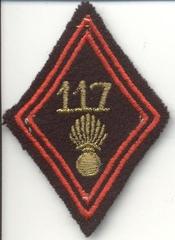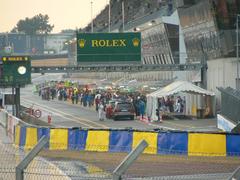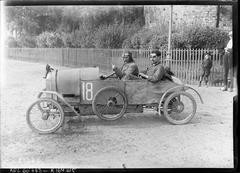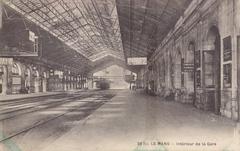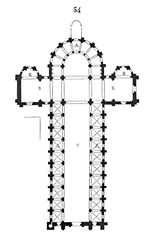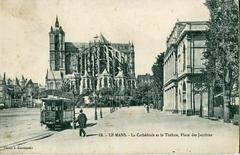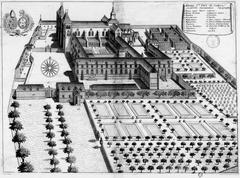Temple Protestant Du Mans: Visiting Hours, Tickets, and Historical Sites in Le Mans, France
Date: 04/07/2025
Introduction
Nestled in the heart of Le Mans, the Temple Protestant du Mans stands as a living testament to the resilience, faith, and cultural diversity that have shaped this historic French city. More than just a place of worship, the temple embodies centuries of Protestant history, architectural innovation, and active community life. This comprehensive guide explores its rich history, distinctive architecture, practical visitor information, and connection to Le Mans’ broader religious heritage, offering essential insights for history enthusiasts, travelers, and spiritual seekers alike.
Table of Contents
- Construction and Architectural Development
- Historical and Cultural Significance
- Key Events and Milestones
- Visitor Information
- Architectural Features
- Nearby Historical Sites and Attractions
- Travel Tips and Best Times to Visit
- Frequently Asked Questions (FAQ)
- Conclusion and Recommendations
- References and Further Reading
Origins of Protestantism in Le Mans
Protestantism in Le Mans traces its origins to the 16th-century Reformation, a period marked by religious upheaval across France following Martin Luther’s theses and the spread of Calvinism. The city’s early Protestant—or Huguenot—community faced cycles of persecution, particularly during the French Wars of Religion (Musée Protestant). Although the Edict of Nantes (1598) granted temporary relief, its revocation in 1685 led to renewed hardship, forcing many Protestants to practice their faith in secret until the climate of tolerance improved after the French Revolution.
Construction and Architectural Development
The present Temple Protestant du Mans, constructed and inaugurated in 1867, reflects the resurgence of Protestant worship post-Revolution and the progressive integration of Protestants into French civic life (Protestantisme et patrimoine). Designed by Louis-Jean Raoulx, the building combines neoclassical sobriety with stylistic influences from Gothic, Byzantine, and Armenian traditions (Wikipedia; Sarthe Tourisme). Its architecture emphasizes clarity, functionality, and inclusiveness—a physical embodiment of Protestant values.
Historical and Cultural Significance
The Temple Protestant du Mans symbolizes the enduring presence of Protestantism in a predominantly Catholic region. It has served as a focal point for religious services, community gatherings, and charitable initiatives, reflecting the Protestant commitment to education, social responsibility, and ecumenical dialogue (Église Protestante Unie de France - Le Mans). The temple’s establishment and ongoing activities underscore the pluralistic and evolving religious landscape of Le Mans.
Key Events and Milestones
- 1867: Inauguration of the temple, marking the renewed public presence of Protestantism in Le Mans.
- 1905: Transition to a public place of worship following the French law separating church and state.
- World Wars: The congregation played an active role in humanitarian aid and local resistance efforts.
- Late 20th–21st Century: Renovations improved accessibility and preserved architectural integrity, while the temple expanded its role as a cultural and social hub.
Visitor Information
Location and Accessibility
- Address: 18 Rue du Grand Pré, 72000 Le Mans, France (thetouristchecklist.com)
- Centrally located, the temple is easily accessible by public transportation, taxi, or on foot from major city landmarks.
Visiting Hours and Tickets
- Regular Hours: Open during Sunday worship services at 10:30 AM. Additional visiting times—such as Saturday afternoons from 16:00 to 18:00—may be available, especially in summer.
- Admission: Free entry; donations are welcome to support maintenance and community activities.
- Special Events: Entry policies for concerts or special exhibitions may vary; check the official website or local tourism resources for details (infoconcert.com).
Guided Tours and Events
- Guided tours are occasionally available, especially during heritage days or by prior arrangement.
- The temple hosts concerts and community events showcasing its acoustics and welcoming atmosphere.
Accessibility for Visitors with Disabilities
- Accessibility features include ramps and step-free access in some areas; however, due to the building’s historical structure, certain spaces may remain challenging. Contact the temple in advance for specific accommodations.
Visitor Etiquette and Dress Code
- Dress modestly; avoid shorts, tank tops, and hats inside the sanctuary.
- Maintain a respectful silence during services or events.
- Photography is generally permitted during public events but always request permission during religious ceremonies.
Facilities and Amenities
- The temple primarily serves as a place of worship and community gathering, with no dedicated visitor center or café.
- Public restrooms are not available on-site; plan accordingly.
Architectural Features
Exterior Design and Materials
The façade combines local roussard sandstone with pale limestone, creating a warm, visually striking appearance that harmonizes with the surrounding streetscape (Sarthe Tourisme).
Monumental Portal and Decorative Elements
A monumental portal, framed by pilasters and pinnacles, is topped by a distinctive rose window featuring a Greek cross and quadrilobe motifs—a blend of Gothic and Byzantine influences. The tympanum displays a bas-relief of an open Bible inscribed with Matthew 11:28, reflecting the Protestant emphasis on scripture (huguenotsinfo.free.fr).
Interior Layout and Liturgical Furnishings
The single unbroken nave, illuminated by large arched windows, leads to a polygonal apse with a raised chancel. Central to the interior are the pulpit and communion table, emphasizing preaching and community participation. The temple houses a Muhleisen organ (1979), renowned for its quality and used in both services and concerts (Wikipedia).
Community Spaces and Use
Beneath the sanctuary, multi-functional rooms accommodate meetings, educational activities, and social events, reaffirming the temple’s commitment to serving both spiritual and civic needs (lemans-tourisme.com).
Nearby Historical Sites and Attractions
Explore Le Mans’ layered history by visiting sites near the temple:
- Cathédrale Saint-Julien: Famed for its medieval stained glass and Gothic frescoes.
- Cité Plantagenêt (Old Town): Medieval streets and half-timbered houses.
- Chapelle de la Visitation & Église Saint-Benoît: Other significant religious monuments.
- Musée de Tessé: Local art and archaeological collections (France-Voyage).
Travel Tips and Best Times to Visit
- Plan your visit around Sunday services or special cultural events for the most vibrant experience.
- Combine your temple visit with a walking tour of Le Mans’ old town and other historical landmarks.
- Early morning and late afternoon provide the best lighting for photography of the façade and rose window.
- Check for local festivals such as heritage days or concerts, which often include special access or activities at the temple.
Frequently Asked Questions (FAQ)
Q: What are the regular visiting hours?
A: The temple is open for Sunday services at 10:30 AM. Saturday afternoon visits are sometimes available; contact the temple or check online for updates.
Q: Is there an entrance fee?
A: No, entry is free. Donations are appreciated.
Q: Are guided tours available?
A: Yes, occasionally, especially during special events or by prior arrangement.
Q: Is the temple accessible to wheelchair users?
A: Some accessibility features are present, but certain areas may be less accessible. Contact the temple ahead of your visit.
Q: Can I take photographs?
A: Photography is allowed during public events; always ask before photographing during religious ceremonies.
Q: Where is the temple located?
A: 18 Rue du Grand Pré, 72000 Le Mans, France—within easy reach of the city center and major attractions.
Conclusion and Recommendations
The Temple Protestant du Mans is more than a historical monument—it is a vibrant community hub and a key element of Le Mans’ pluralistic heritage. Whether you are intrigued by its neoclassical architecture, moved by its story of perseverance, or seeking a place for reflection, the temple offers a deeply rewarding experience. To make the most of your visit:
- Check current hours and event listings in advance.
- Consider attending a service or special event for an authentic introduction to the community.
- Explore nearby historical sites to enrich your understanding of Le Mans’ religious and cultural landscape.
References and Further Reading
- Musée Protestant – Le Mans
- Wikipedia – Temple Protestant du Mans
- Sarthe Tourisme – Église Protestante
- The Tourist Checklist – Things to Do in Le Mans
- Protestantisme et patrimoine – Temple du Mans
- Le Mans Tourisme – Visites Guidées
- Église Protestante Unie de France – Le Mans
- Église Protestante Évangélique Le Mans
- Musée virtuel du protestantisme – L’architecture religieuse protestante
- France This Way – Le Mans
- France-Voyage – Le Mans Tourism
- Official parish website
- infoconcert.com – Temple Protestant du Mans events
For the most up-to-date information on hours, events, and accessibility, always check the official parish website or the Le Mans tourism portal.
